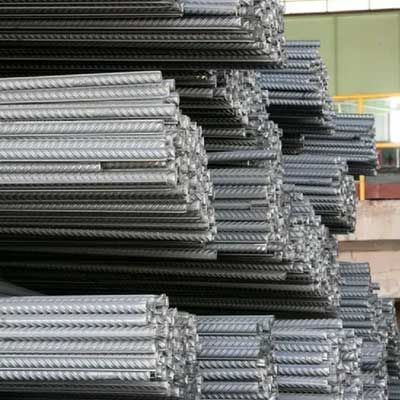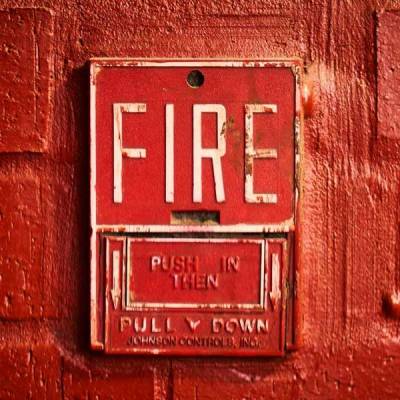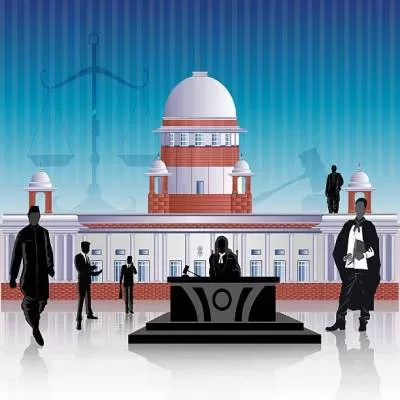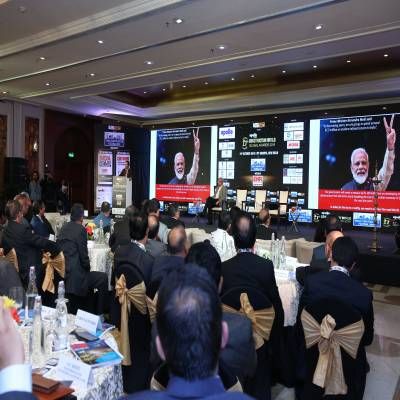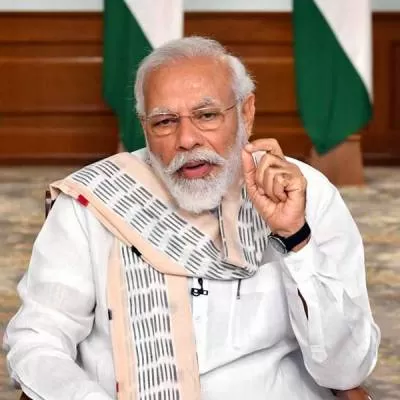- Home
- Infrastructure Urban
- ECONOMY & POLICY
- Mall Maze
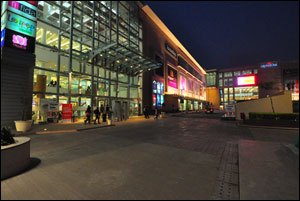
Mall Maze
Malls in India seem to be getting bigger with the average size likely to increase from around 380,000 sq ft to 470,000 sq ft in 2015. While this is in sync with India´s retail transformation, the question remains: of the hundreds of shopping malls operating today, how many are genuinely successful?
The year 1999 marked the beginning of India´s mall story. Mall mania took centre stage when Delhi´s Ansal Plaza and Mumbai´s Crossroads opened to shoppers. Today, though, while the average is around 60 per cent, some malls are operating at 10-20 per cent utilisation. And according to Assocham, 47 per cent of total mall space in India is vacant. Mumbai´s eight-year-old Atria Mall is up for sale for non-performance. This list reportedly includes Navi Mumbai´s Full Stop Mall, Gold City Mall in Vashi, Mumbai's Palm Beach Galleria Mall, Star City Mall in Delhi´s Mayur Vihar, and Spencer´s Plaza in Chennai, among others. Another fact: while Delhi and Mumbai occupy 62 per cent of the total mall space in India, Bengaluru and Chennai have a combined share of around 20 per cent. What exactly is going on?
Big mistakes
Despite the presence of over 500 malls in the country, some mall developers are still adopting a primitive way of development. ´Developers have to take a holistic view of how they can create a successful mall,´ says Susil S Dungarwal, Chief Mall Mechanic, Beyond Squarefeet Advisory. He mentions the three critical reasons that lead to a mall´s failure: outright sole model, bad planning and poor management. In the sole model, the developer sells individual shops to different owners or investors at a very high price, who then expect even higher returns. He gives the example of Atria Mall. ´The sole model approach was wrong and it was not designed for a mall.´ The circulation of the mall is poor, it does not engage customers, there are a lot of dead corners and the mall is not managed well. For Shubhranshu Pani, Managing Director-Retail Services, Jones Lang LaSalle India, too, suboptimal utilisation of spaces is the culprit. While Anand Sundaram, CEO, Pioneer Property Zone (PPZ), highlights improper parking provisions as a reason, Kishore Bhatija, Managing Director & CEO, Inorbit Malls (India), points to the selection of location as critical. And Gulam Zia, Executive Director (Hospitality, Retail and Advisory), Knight Frank India, tells us, ´Except for two to three malls in the metros, none are doing well. You have to find the right mix to cater to the right consumers. Also, the difference between what retailers can pay and the real estate cost is huge. And developers need a good anchor tenant to attract footfalls.´
Success stories
Still, there are a number of successful malls in India (see box for the top 10). According to Sundaram, these include Forum in the South, Citywalk and Pacific in Delhi, High Street Phoenix in Mumbai and Kumar Pacific in Pune. Pani says, ´Success can be achieved by making structural design-oriented changes, implementing softer parameters such as changing the positioning of anchor stores, and introducing major attractions or newer retail categories in dead spaces.´
Delhi´s Alpha G: Corp developed two malls in Amritsar and Ahmedabad four to five years ago. ´A well-designed mall can work anywhere,´ affirms Ashish Sarin, CFO & Executive Director-Finance, Operations and Legal, Alpha G:Corp Development. The irony is that the mall located in Ahmedabad, once termed the graveyard of malls, is 100 per cent leased out today. ´In fact, people now want us to create more space,´ he adds. The success is a result of a sustainable model that includes lots of parking; open space and light; and a design that ensures the entire mall can be viewed from any single point. ´A good mall should be designed as a straight box,´ says Sarin. While scarcity of space is an ongoing challenge in cities, the alternative is an L-shaped design, as adopted in the Alpha malls. Also, not selling a single space has proved to be a fruitful decision for the company.
India´s top 10 successful malls include the Lulu Mall in Kochi and Inorbit in Mumbai. Spread across 2.5 million sq ft, Lulu Mall, which opened in 2013, has achieved instant success with the brand name Lulu, which has been in the Middle East for over 45 years. ´Many people from Kerala are in the Middle East,´ says Shibu Philips, Business Head, Lulu Mall. ´And we offer the same quality, design and spread. With a mid to premium positioning, we have brought around 52 brands for the first time in Kerala.´ Lulu has also tied up with Middle East group Al Hokair to set up an entertainment zone comprising an ice skating rink, 12-lane bowling alley, 5D cinema, rollercoaster and much more.
For its part, Inorbit Mall is present in Mumbai, Pune, Hyderabad, Bengaluru and Vadodara. With retail built-up area typically being 5.5 lakh sq ft, the mall in Hyderabad is about 8 lakh sq ft (the company's largest) and in Bengaluru 2.5 lakh sq ft (the company's smallest). Bhatija believes location is the prime factor for the Mumbai mall´s success. ´It is easily visible and convenient to reach,´ he says. ´Also, it boasts two major anchors Shoppers Stop and Lifestyle that carry a large range of brands as well as 100 other stores. Car parking has also been addressed.´
Managing malls
Ultimately, a mall is social infrastructure; if a customer does not like it, he will not go there again. And mall managers or management firms are responsible for ensuring that customers and retailers like it.´The first person to be contacted is the manager,´ Dungarwal says.
A mall manager or advisor can visualise factors that could go wrong. His approach is from a more operational perspective of how a mall runs, the kind of store a retail brand would want, the zoning required for the customer and ways to position the mall differently from a mall next door. Zia adds, ´A mall manager will ensure retailers are earning profits and no space is lying vacant.´ For Bhatija, operation and management are crucial and mall managers should be aware of local needs and dynamics. ´As we grow geographically across the country, the role of a mall manager becomes more crucial.´ And for Sundaram, a mall manager is a function and business specialist. ´Our role begins at the design stage in offering insights on what the retailer and customer want. Once a fine balance is created between design, cost and timeline, we decide on the set-up, anchors required and management style.´
The role of a mall manager is often handled by mall developers or owners and the concept owing to the cost involved is yet to pick up in India. Pani clarifies, ´Involving a mall manager does not mean investment, but listening, addressing and directing the issues to the right places.´ And Dungarwal is confident that eventually a mall advisory can bring in savings for a mall developer. ´Within three days, we have saved a mall developer about Rs 8 crore by advising him on the right frontage of the store,´ he says. ´Our fee would not even be one-tenth of what we saved him.´ Developers need to consider this.
Money talk
It is also important to note the vast difference between the cost of a space and the budget of the retailer. Sarin informs, ´It will take three to four years to construct a property; if the average cost of development is Rs 4,000 per sq ft, for 1.5 million sq ft, this will add up to about Rs 700 crore straight away.´ And Bhatija says, ´There is a base cost we need to incur. Large land costs, high interest rates and long gestation periods are challenging. So there is a minimum rent required to support the business.´ But for retailers, as Zia says, these rents are often a burden to pay.
Turning the tide
All may not be lost for a non-performing mall though. ´Right location, proper infrastructure, environment and surroundings, right design and smart management with regular programmes can bring consumers back,´ says Zia with the caveat that if the location is not right, not much can be done.
To reinvent a mall, you need to know its history. ´We took over Aashima Mall in Bhopal one year after it commenced operations,´ shares Dungarwal. ´Yes, it was not even 40 per cent operational. Design, occupancy and footfalls were weak.
To reorient the mall and make it customer-friendly, we changed layouts, the food court, zoning, and other things which we thought were not rightly done.´ Today, footfalls have grown by almost 300 per cent and occupancy by 100 per cent. Sales and the number of retailers vouching to be there have grown as well. A mall that was written off as dead mall has been revived.´
In addition, experts share their recommendations for malls that are upcoming (see table) or non-performing:
- Sarin: Market research must be done on priority to drive the final design and mix.
- Dungarwal: The mall developer must choose the right partner for management and advisory. Hire a mall advisor rather than looking at the cost.
- Bhatija: For a non-performing mall, go back to the basics and understand the catchment. As you cannot change the location, tweak yourself to cater to your customers.
- Pani: The mall developer should consider demand and supply and build accordingly.
- Philips: Malls half sold or leased tend to suffer as no one knows who the boss is. The lease model, where someone is in control, is ideal.
Investing in malls is not similar to real estate housing where returns come swiftly. Malls involve a long gestation period and the developer starts getting returns only after four years. As retail consumption in India has been slow and funding has been a problem in the past two years, Pani observes, ´A lot of developers are no longer building shopping centres. The ones involved are developers directed towards retail or people retailing because they have the land for it.´
As against five to six years for RoI, Philips updates, ´Everyone is looking at 12 years now.´ Hence, he suggests that unless there is a long-term commitment from a builder, one should not step into developing malls.
However, FDI inflows are yet to pick up and the 2014 elections are down the line. Hopefully, in times to come, these shall sustain mall revenues and act as game changers. Meanwhile, mall developers must re-strategise to climb the ladder of success.
Upcoming malls in India (likely in the next three to five years)
Bengaluru
Garden Galleria (Valdel Mall)
Lido Centre
Neo Mall
Nitesh Mall
Nova
Zephyr
Chennai
Grand Marina
Marg Junction-Riverside Mall
Faridabad
81 High Street
Gardenia Sky Mall
Ghaziabad
Celebration City (RED Mall)
La Gracia
Greater Nodia
Imperial H2O Arcade
Premia Corporate City (Mall)
Regal Emporio
The Great Adventure Mall"
Gurgaon
Appughar Mall
Aquarius Bisiness Park Mall
Aravali Super Star Mall
Aurum
Baani City Center
Corporate Greens (Retail)
Cosmos Commercial
Elvedor Commercial
Senior Mall
The Mall
Urbana (Retail)
Kochi
The Great India Place
Kolkata
Forum
Panthapadap Shopping Mall
South City Mall
Varnaparichay-The Book Mall
New Delhi
Aggarwal City Mall
Parsvanth Mall
Noida
The Temean (Landmark Tower)
Wave One Retail
Pune
Xion
Source: Knight Frank India
TOP 10 SUCCESSFUL MALLS IN INDIA
| Mall | City | Size (sq ft) |
|---|---|---|
| Phoenix Palladium | Mumbai | 300,000 |
| Oberoi Mall | Mumbai | 550,000 |
| Infinity II | Mumbai | 300,000 |
| Inorbit | Mumbai | 550,000 |
| Select Citywalk | Saket | 600,000 |
| Forum Mall | Bengaluru | 350,000 |
| Lulu | Kochi | 1,700,000 |
| Express Avenue Mall | Chennai | 900,000 |
| Phoenix Market City | Chennai | 1,000,000 |
| DLF Emporio | Vasant Kunj | 320,000 |
Source: Knight Frank India
Quick Bytes
- Reasons to a mall´s failure: Sole model, bad planning and poor management.
- Challenges: Large land costs, high interest rates and long gestation periods.
- Solutions: Right location and design, smart management and proper infrastructure.
With an increase in the number of non-performing malls in India, Shriyal Sethumadhavan examines what´s wrong and what can be done. Malls in India seem to be getting bigger with the average size likely to increase from around 380,000 sq ft to 470,000 sq ft in 2015. While this is in sync with India´s retail transformation, the question remains: of the hundreds of shopping malls operating today, how many are genuinely successful? The year 1999 marked the beginning of India´s mall story. Mall mania took centre stage when Delhi´s Ansal Plaza and Mumbai´s Crossroads opened to shoppers. Today, though, while the average is around 60 per cent, some malls are operating at 10-20 per cent utilisation. And according to Assocham, 47 per cent of total mall space in India is vacant. Mumbai´s eight-year-old Atria Mall is up for sale for non-performance. This list reportedly includes Navi Mumbai´s Full Stop Mall, Gold City Mall in Vashi, Mumbai's Palm Beach Galleria Mall, Star City Mall in Delhi´s Mayur Vihar, and Spencer´s Plaza in Chennai, among others. Another fact: while Delhi and Mumbai occupy 62 per cent of the total mall space in India, Bengaluru and Chennai have a combined share of around 20 per cent. What exactly is going on? Big mistakes Despite the presence of over 500 malls in the country, some mall developers are still adopting a primitive way of development. ´Developers have to take a holistic view of how they can create a successful mall,´ says Susil S Dungarwal, Chief Mall Mechanic, Beyond Squarefeet Advisory. He mentions the three critical reasons that lead to a mall´s failure: outright sole model, bad planning and poor management. In the sole model, the developer sells individual shops to different owners or investors at a very high price, who then expect even higher returns. He gives the example of Atria Mall. ´The sole model approach was wrong and it was not designed for a mall.´ The circulation of the mall is poor, it does not engage customers, there are a lot of dead corners and the mall is not managed well. For Shubhranshu Pani, Managing Director-Retail Services, Jones Lang LaSalle India, too, suboptimal utilisation of spaces is the culprit. While Anand Sundaram, CEO, Pioneer Property Zone (PPZ), highlights improper parking provisions as a reason, Kishore Bhatija, Managing Director & CEO, Inorbit Malls (India), points to the selection of location as critical. And Gulam Zia, Executive Director (Hospitality, Retail and Advisory), Knight Frank India, tells us, ´Except for two to three malls in the metros, none are doing well. You have to find the right mix to cater to the right consumers. Also, the difference between what retailers can pay and the real estate cost is huge. And developers need a good anchor tenant to attract footfalls.´ Success stories Still, there are a number of successful malls in India (see box for the top 10). According to Sundaram, these include Forum in the South, Citywalk and Pacific in Delhi, High Street Phoenix in Mumbai and Kumar Pacific in Pune. Pani says, ´Success can be achieved by making structural design-oriented changes, implementing softer parameters such as changing the positioning of anchor stores, and introducing major attractions or newer retail categories in dead spaces.´ Delhi´s Alpha G: Corp developed two malls in Amritsar and Ahmedabad four to five years ago. ´A well-designed mall can work anywhere,´ affirms Ashish Sarin, CFO & Executive Director-Finance, Operations and Legal, Alpha G:Corp Development. The irony is that the mall located in Ahmedabad, once termed the graveyard of malls, is 100 per cent leased out today. ´In fact, people now want us to create more space,´ he adds. The success is a result of a sustainable model that includes lots of parking; open space and light; and a design that ensures the entire mall can be viewed from any single point. ´A good mall should be designed as a straight box,´ says Sarin. While scarcity of space is an ongoing challenge in cities, the alternative is an L-shaped design, as adopted in the Alpha malls. Also, not selling a single space has proved to be a fruitful decision for the company. India´s top 10 successful malls include the Lulu Mall in Kochi and Inorbit in Mumbai. Spread across 2.5 million sq ft, Lulu Mall, which opened in 2013, has achieved instant success with the brand name Lulu, which has been in the Middle East for over 45 years. ´Many people from Kerala are in the Middle East,´ says Shibu Philips, Business Head, Lulu Mall. ´And we offer the same quality, design and spread. With a mid to premium positioning, we have brought around 52 brands for the first time in Kerala.´ Lulu has also tied up with Middle East group Al Hokair to set up an entertainment zone comprising an ice skating rink, 12-lane bowling alley, 5D cinema, rollercoaster and much more. For its part, Inorbit Mall is present in Mumbai, Pune, Hyderabad, Bengaluru and Vadodara. With retail built-up area typically being 5.5 lakh sq ft, the mall in Hyderabad is about 8 lakh sq ft (the company's largest) and in Bengaluru 2.5 lakh sq ft (the company's smallest). Bhatija believes location is the prime factor for the Mumbai mall´s success. ´It is easily visible and convenient to reach,´ he says. ´Also, it boasts two major anchors Shoppers Stop and Lifestyle that carry a large range of brands as well as 100 other stores. Car parking has also been addressed.´ Managing malls Ultimately, a mall is social infrastructure; if a customer does not like it, he will not go there again. And mall managers or management firms are responsible for ensuring that customers and retailers like it.´The first person to be contacted is the manager,´ Dungarwal says. A mall manager or advisor can visualise factors that could go wrong. His approach is from a more operational perspective of how a mall runs, the kind of store a retail brand would want, the zoning required for the customer and ways to position the mall differently from a mall next door. Zia adds, ´A mall manager will ensure retailers are earning profits and no space is lying vacant.´ For Bhatija, operation and management are crucial and mall managers should be aware of local needs and dynamics. ´As we grow geographically across the country, the role of a mall manager becomes more crucial.´ And for Sundaram, a mall manager is a function and business specialist. ´Our role begins at the design stage in offering insights on what the retailer and customer want. Once a fine balance is created between design, cost and timeline, we decide on the set-up, anchors required and management style.´ The role of a mall manager is often handled by mall developers or owners and the concept owing to the cost involved is yet to pick up in India. Pani clarifies, ´Involving a mall manager does not mean investment, but listening, addressing and directing the issues to the right places.´ And Dungarwal is confident that eventually a mall advisory can bring in savings for a mall developer. ´Within three days, we have saved a mall developer about Rs 8 crore by advising him on the right frontage of the store,´ he says. ´Our fee would not even be one-tenth of what we saved him.´ Developers need to consider this. Money talk It is also important to note the vast difference between the cost of a space and the budget of the retailer. Sarin informs, ´It will take three to four years to construct a property; if the average cost of development is Rs 4,000 per sq ft, for 1.5 million sq ft, this will add up to about Rs 700 crore straight away.´ And Bhatija says, ´There is a base cost we need to incur. Large land costs, high interest rates and long gestation periods are challenging. So there is a minimum rent required to support the business.´ But for retailers, as Zia says, these rents are often a burden to pay. Turning the tide All may not be lost for a non-performing mall though. ´Right location, proper infrastructure, environment and surroundings, right design and smart management with regular programmes can bring consumers back,´ says Zia with the caveat that if the location is not right, not much can be done. To reinvent a mall, you need to know its history. ´We took over Aashima Mall in Bhopal one year after it commenced operations,´ shares Dungarwal. ´Yes, it was not even 40 per cent operational. Design, occupancy and footfalls were weak. To reorient the mall and make it customer-friendly, we changed layouts, the food court, zoning, and other things which we thought were not rightly done.´ Today, footfalls have grown by almost 300 per cent and occupancy by 100 per cent. Sales and the number of retailers vouching to be there have grown as well. A mall that was written off as dead mall has been revived.´ In addition, experts share their recommendations for malls that are upcoming (see table) or non-performing: Sarin: Market research must be done on priority to drive the final design and mix. Dungarwal: The mall developer must choose the right partner for management and advisory. Hire a mall advisor rather than looking at the cost. Bhatija: For a non-performing mall, go back to the basics and understand the catchment. As you cannot change the location, tweak yourself to cater to your customers. Pani: The mall developer should consider demand and supply and build accordingly. Philips: Malls half sold or leased tend to suffer as no one knows who the boss is. The lease model, where someone is in control, is ideal.Eyeing returns Investing in malls is not similar to real estate housing where returns come swiftly. Malls involve a long gestation period and the developer starts getting returns only after four years. As retail consumption in India has been slow and funding has been a problem in the past two years, Pani observes, ´A lot of developers are no longer building shopping centres. The ones involved are developers directed towards retail or people retailing because they have the land for it.´ As against five to six years for RoI, Philips updates, ´Everyone is looking at 12 years now.´ Hence, he suggests that unless there is a long-term commitment from a builder, one should not step into developing malls. However, FDI inflows are yet to pick up and the 2014 elections are down the line. Hopefully, in times to come, these shall sustain mall revenues and act as game changers. Meanwhile, mall developers must re-strategise to climb the ladder of success. Upcoming malls in India (likely in the next three to five years) Bengaluru Garden Galleria (Valdel Mall) Lido Centre Neo Mall Nitesh Mall Nova Zephyr Chennai Grand Marina Marg Junction-Riverside Mall Faridabad 81 High Street Gardenia Sky Mall Ghaziabad Celebration City (RED Mall) La Gracia Greater Nodia Imperial H2O Arcade Premia Corporate City (Mall) Regal Emporio The Great Adventure Mall" Gurgaon Appughar Mall Aquarius Bisiness Park Mall Aravali Super Star Mall Aurum Baani City Center Corporate Greens (Retail) Cosmos Commercial Elvedor Commercial Senior Mall The Mall Urbana (Retail) Kochi The Great India Place Kolkata Forum Panthapadap Shopping Mall South City Mall Varnaparichay-The Book Mall New Delhi Aggarwal City Mall Parsvanth Mall Noida The Temean (Landmark Tower) Wave One Retail Pune Xion Source: Knight Frank India TOP 10 SUCCESSFUL MALLS IN INDIA Mall City Size (sq ft) Phoenix Palladium Mumbai 300,000 Oberoi Mall Mumbai 550,000 Infinity II Mumbai 300,000 Inorbit Mumbai 550,000 Select Citywalk Saket 600,000 Forum Mall Bengaluru 350,000 Lulu Kochi 1,700,000 Express Avenue Mall Chennai 900,000 Phoenix Market City Chennai 1,000,000 DLF Emporio Vasant Kunj 320,000 Source: Knight Frank India Quick Bytes Reasons to a mall´s failure: Sole model, bad planning and poor management. Challenges: Large land costs, high interest rates and long gestation periods. Solutions: Right location and design, smart management and proper infrastructure.To share your views on ways to develop a successful mall, write in at feedback@ASAPPmedia.com


